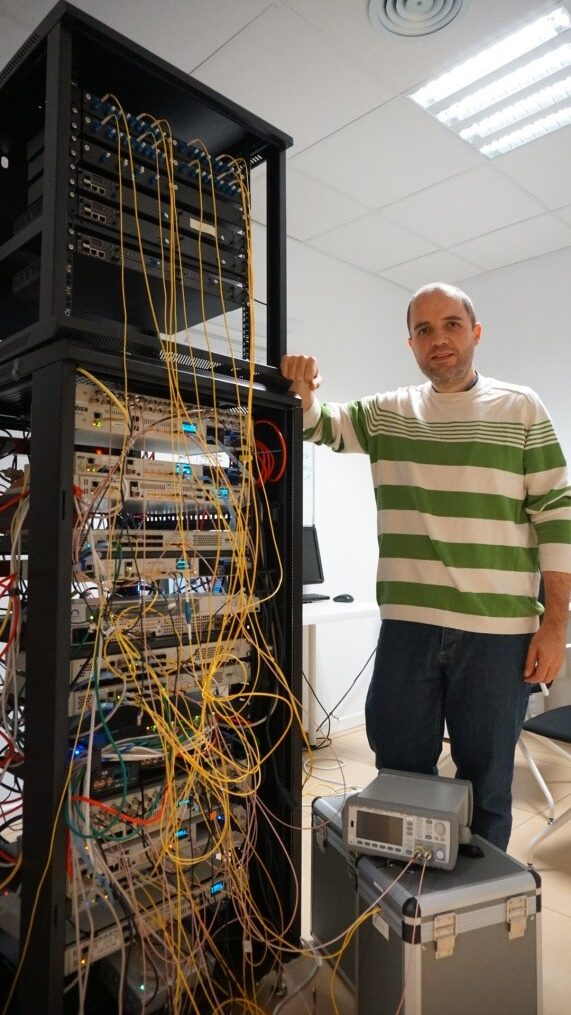“Many particle accelerators are already using our timing solutions. In a remarkable way, other key facilities are in the field of Astrophysics and telescopes Arrays”

Rafael Rodríguez, Co-founder and CTO of Seven Solutions
Rafael Rodríguez is a Computer Engineer graduated from the University of Granada. His main interests are embedded and FPGA-based systems, time synchronization, frequency distribution and deterministic communications. He is co-founder and head of the Technology Department (CTO) of Seven Solutions. During the last 15 years, he has participated in the design of synchronization and control systems for multiple facilities such as particle accelerators (CERN, IFMIF and GSI), radio astronomy telescopes (SKA, CTA and HiSCORE) and for National Metrology Institutes (in United Kingdom, France, Italy and Netherlands). He has also worked on industrial projects for other sectors such as radar systems (INDRA) and aerospace (AIRBUS and ESA).
–Seven Solutions has a broad experience in large international scientific infrastructures. Its synchronising systems are part of over 60 particle colliders in the world, including the Large Hadron Collider (LHC) at CERN. Founded in 2006, the company was dedicated to real-time video surveillance systems. How have you managed to gain international recognition and become an essential partner of institutions such as CERN or CIEMAT?
-Seven Solutions started as a consulting company in the field of electronics and embedded systems. Later, it specialized in video surveillance systems and applications. Unfortunately, although the products were quite innovative in this field, we failed on the commercial actions, which forced us to stop these development and product lines. We then decided to move forward from proprietary solutions to open hardware approach in a highly innovative field (timing and control for particle accelerators) and, in collaboration with a large tractor institution such as CERN, we joined the Open Hardware Repository (OHWR) movement. This approach was key and mandatory to allow a relationship of trust between Seven Solutions and CERN, based on mutual understanding and excellence in engineering. They helped us a lot, improving our internal quality procedures and manufacturing capabilities. These skills combined with providing open hardware, make possible for other large facilities such as GSI, ESS or LIPAc as well as several international companies to use products, even for small SMEs. In this framework we contacted CIEMAT researchers, with whom we began to collaborate in particle accelerators control systems for IFMIF-DONES.
-Besides synchronization systems, in which other systems of facilities such as IFMIF-DONES or LHC can the technology developed by Seven Solutions provide added value?
-Many particle accelerators are already using our timing solutions. In a remarkable way, other key facilities are in the field of Astrophysics and telescopes Arrays. Our solution has been used in CTA, KM3Net, SKA, EISCAT or ICE-Cube facilities among others. Furthermore, other key sectors are related to metrology applications of timing (associated to National Time metrology institutes) and time transfer applications based on the use of optical fibre networks for optical patterns comparison.
-The company started as a spin-off from the University of Granada. Is the success story of Seven Solutions an exception among the community of the University of Granada?
-The University of Granada (UGR) has a large tradition on spin-off creation and although Granada is not very industrial, UGR has good examples of technology transference and innovation in fields such as biotechnology, IT, or renewable energies. Seven Solutions is a spin-off of the University of Granada and, in a similar way, we are also a spin-off of CERN. UGR supported us from the beginning, providing the key initial business-model training and believing in us. Nevertheless, contacts with CERN were crucial to ignite our capabilities and disseminate our solutions worldwide. We could say that we are a unique case at the University Granada, but at the same time the key ingredients were purely local, “grey matter, ambition and a lot of enthusiasm”. The University of Granada has many other spin-off companies with these capabilities and with very innovative solutions. If they find the way to reach the international sphere, we think all of them will succeed.
-Which was the role of Seven Solutions in the first phase of Granada’s candidacy to build IFMIF-DONES?
-From the very beginning, we collaborated with CIEMAT providing support for the installation of the facility, first in Andalucía and later and more specifically in Granada. We provided the first contact with public institutions as University of Granada, City Hall, Junta de Andalucía and CDTI. At the same time, we participated in the enrolment of tier-one national companies and associations including AEMETIC, INEUSTAR, and OnGranada. We have also collaborated with other facilities and experts, particularly form CERN or the Max Planck Institute. Together with local entrepreneurs, we have participated in many events to disseminate the benefits of the facility and the role of fusion energy in the society. We really think that such a facility can help to mitigate the energy problems of this century and we are very proud to have small but decisive contribution in getting Granada chosen as the host of this facility.
-How was Granada’s candidacy received at first?
-The welcome at the local level was excellent with strong support of the local administration and industry sector. Scaling up this idea to the regional or national level was more complicated but institutions as UGR and CIEMAT did not give up, and now we are closer than ever to have this facility built in Granada.
-Which role will play Seven Solutions and its technology in the future particle accelerator in Escúzar?
-The main field of expertise of Seven Solutions is related to time transfer, RF dissemination and RF control systems such as LLRFs or BPMs devices. We think we can play an important role in these instruments of IFMIF-DONES. Furthermore, our engineers have been working onsite in facilities such as CERN, ITER, ESS or LIPAc, bringing back expertise, technologies and innovation to our company’s solutions. All these elements have allowed us to contribute to many different fields related to timing, RF systems, diagnosis, fast and low control, EPICS, communications and system automation. Furthermore, as an innovative company with a team player spirit, we are open to new challenges and ready to address additional opportunities, for instance in collaboration with partners as the University of Granada or CIEMAT. In any case, this field is a very competitive one and it is too early to know what the final role of Seven Solutions will be. Now, we are focussed on providing the best solutions for the most challenging facilities in the world and hopefully, this will be the decisive qualification criteria to choose Seven Solutions as a key player for IFMIF-DONES systems in a close future.

